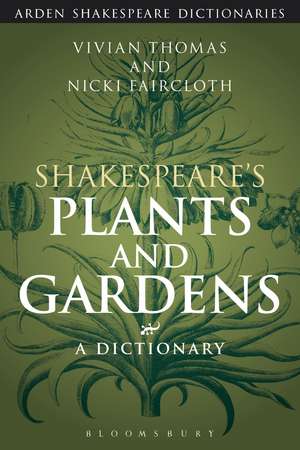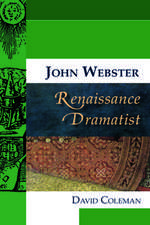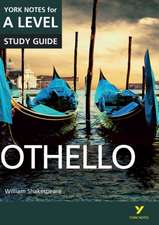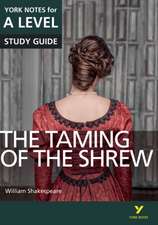Shakespeare's Plants and Gardens: A Dictionary: Arden Shakespeare Dictionaries
Autor Vivian Thomas, Nicki Fairclothen Limba Engleză Paperback – 18 mai 2016
| Toate formatele și edițiile | Preț | Express |
|---|---|---|
| Paperback (1) | 270.06 lei 6-8 săpt. | |
| Bloomsbury Publishing – 18 mai 2016 | 270.06 lei 6-8 săpt. | |
| Hardback (1) | 821.32 lei 6-8 săpt. | |
| Bloomsbury Publishing – 26 feb 2014 | 821.32 lei 6-8 săpt. |
Din seria Arden Shakespeare Dictionaries
- 44%
 Preț: 577.49 lei
Preț: 577.49 lei - 44%
 Preț: 677.30 lei
Preț: 677.30 lei - 43%
 Preț: 681.09 lei
Preț: 681.09 lei - 43%
 Preț: 683.49 lei
Preț: 683.49 lei -
 Preț: 635.27 lei
Preț: 635.27 lei - 22%
 Preț: 1014.54 lei
Preț: 1014.54 lei - 25%
 Preț: 273.27 lei
Preț: 273.27 lei - 12%
 Preț: 270.06 lei
Preț: 270.06 lei - 11%
 Preț: 274.20 lei
Preț: 274.20 lei - 44%
 Preț: 817.06 lei
Preț: 817.06 lei - 44%
 Preț: 816.57 lei
Preț: 816.57 lei - 43%
 Preț: 822.18 lei
Preț: 822.18 lei - 37%
 Preț: 815.63 lei
Preț: 815.63 lei -
 Preț: 269.70 lei
Preț: 269.70 lei - 12%
 Preț: 269.60 lei
Preț: 269.60 lei -
 Preț: 245.11 lei
Preț: 245.11 lei
Preț: 270.06 lei
Nou
Puncte Express: 405
Preț estimativ în valută:
51.68€ • 53.89$ • 42.95£
51.68€ • 53.89$ • 42.95£
Carte tipărită la comandă
Livrare economică 20 martie-03 aprilie
Preluare comenzi: 021 569.72.76
Specificații
ISBN-13: 9781474273879
ISBN-10: 1474273874
Pagini: 432
Dimensiuni: 156 x 234 x 29 mm
Greutate: 0.66 kg
Editura: Bloomsbury Publishing
Colecția The Arden Shakespeare
Seria Arden Shakespeare Dictionaries
Locul publicării:London, United Kingdom
ISBN-10: 1474273874
Pagini: 432
Dimensiuni: 156 x 234 x 29 mm
Greutate: 0.66 kg
Editura: Bloomsbury Publishing
Colecția The Arden Shakespeare
Seria Arden Shakespeare Dictionaries
Locul publicării:London, United Kingdom
Caracteristici
An invaluable reference resource for students and scholars of Shakespeare
Notă biografică
Vivian Thomas is a freelance lecturer for the University of Warwick and the Shakespeare Birthplace TrustNicki Faircloth is a freelance lecturer and writer based in London
Cuprins
Series Editor's Preface AcknowledgementsIntroductionAbbreviationsA-Z entriesSelect BibliographyIndex
Recenzii
This latest work in the Arden Shakespeare Dictionaries series offers a fascinating and comprehensive resource for students and the interested general reader, in both Shakespearean studies and in garden history, seeking as it does to examine every plant and aspect of gardens in Shakespeare's work... An impressive work of scholarship and research.
Thomas and Faircloth's value-added concordance brings a contemporary academic treatment to William Shakespeare's use of plant and garden terminology. The terms in the roughly 350 entries appear in the forms in which Shakespeare used them and are alphabetically arranged. Most words are discussed in a minimum of a half-page, with those heavily used in the Bard's works-lily, garden, forest-explored over multiple pages. Entries place the word/item in its historical, social, and literary context; identify its placement within Shakespeare's writings; explicate his use of the word; and quote the associated line(s). The volume has an intriguing appendix in which each of the playwright's works is listed alphabetically by title, beneath which is a collective of all the plant and garden-based words used within it. VERDICT:Very useful for those libraries supporting Shakespearean scholars and those collecting the other titles in the series.
Scholars looking for the symbolic significance of unfamiliar plants will find much of use here, as demonstrated by the entry on the medlar, a now uncommon fruit with both sexual connotations and punning potential. The volume is almost as interesting for its wide-ranging introduction and survey of botanically related criticism as for the entries.It will be a good addition for comprehensive Shakespeare collections or libraries supporting intensive study of the early modern period. Summing Up: Recommended. Comprehensive early modern collections supporting graduate students and researchers/faculty.
Thomas and Faircloth's value-added concordance brings a contemporary academic treatment to William Shakespeare's use of plant and garden terminology. The terms in the roughly 350 entries appear in the forms in which Shakespeare used them and are alphabetically arranged. Most words are discussed in a minimum of a half-page, with those heavily used in the Bard's works-lily, garden, forest-explored over multiple pages. Entries place the word/item in its historical, social, and literary context; identify its placement within Shakespeare's writings; explicate his use of the word; and quote the associated line(s). The volume has an intriguing appendix in which each of the playwright's works is listed alphabetically by title, beneath which is a collective of all the plant and garden-based words used within it. VERDICT:Very useful for those libraries supporting Shakespearean scholars and those collecting the other titles in the series.
Scholars looking for the symbolic significance of unfamiliar plants will find much of use here, as demonstrated by the entry on the medlar, a now uncommon fruit with both sexual connotations and punning potential. The volume is almost as interesting for its wide-ranging introduction and survey of botanically related criticism as for the entries.It will be a good addition for comprehensive Shakespeare collections or libraries supporting intensive study of the early modern period. Summing Up: Recommended. Comprehensive early modern collections supporting graduate students and researchers/faculty.














